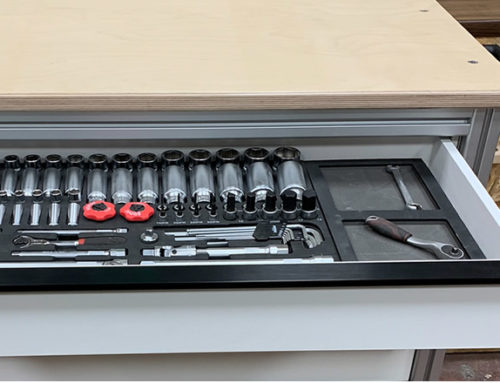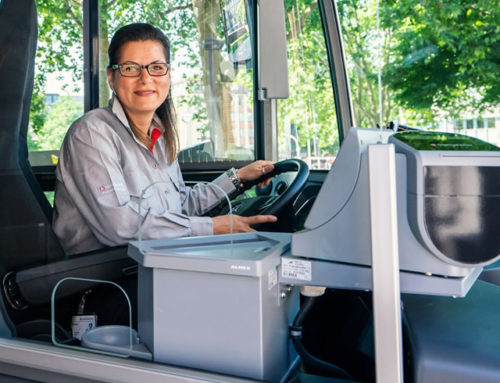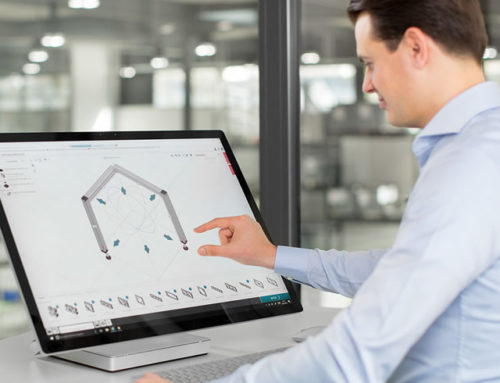The consequences of the digital revolution for work bench ergonomics are as many and varied as they are remarkable.
Industry 4.0 is the talk of the town in Germany. However, it’s all too easy to lose sight of what the fourth industrial revolution means for ergonomics in the workplace. The fact these two issues are closely intertwined is difficult to dismiss. After all, Industry 4.0 is running rampant while the German population is shrinking and getting ever older. Companies are increasingly looking at how they can keep their employees fit for work – just as much as they are exploring the application of digital systems. The following blog post turns the spotlight onto the direct consequences of the digital revolution for health at the industrial work bench.
Work bench ergonomics through human-machine collaboration
Last time, we looked at cyber-physical systems (CPS), with workpieces being represented by a software agent and therefore able to communicate with each other. Of course, that doesn’t mean people are left out in the cold by this Internet of Things. Instead, their involvement can extend far beyond simply operating controls. People will themselves become part of the network – and all in line with ergonomic principles. Let’s imagine that product A has been tasked with deciding who should machine it. It will review the personnel data at its disposal (such as height or previous jobs) and determine that person B is the most suitable. Person C is not selected because there is a risk the machining operation will put too much strain on him or her.
Another way that people and machines will interact with each other as part of Industry 4.0 is in the use of collaborative robots. In this case, people will, to a certain extent, work hand-in-hand with their artificial colleagues. This division of labour has a lot going for it in terms of ergonomic considerations. Firstly, the machines can take care of tasks that would quickly result in physical strain for human workers due to awkward postures or heavy tools, for example. Secondly, the latest generation of robots have edge-free outer skins, which means they can work directly next to people. As a result, protective guards and special work clothing are no longer required. What’s more, the robots use special sensors to detect contact and take careful evasive action.
Ergonomic work bench for manual work
It’s safe to say that people are not being pushed into the background. Manual production is still hugely important for Industry 4.0. Although work like this is well known for being physically demanding, the ever greater integration of workers into digital systems also means there is a growing level of transparency regarding ergonomics in the workplace. If key data (height, ideal handling area, etc.) is available for all workers, companies can ultimately ensure their staff are deployed in as efficient and ergonomic a way as possible. In the future, there will be no excuse for not using steplessly adjustable, ergonomic work benches. That is why Industry 4.0 represents another step forward in the development of ergonomic work bench design.
Another remarkable emerging trend in ergonomic working practices relates to “wearables”. Although most people will automatically think of smartwatches, wearable computer systems also offer a whole host of benefits for the industrial work bench. For example, there are already intelligent gloves that actively help wearers by indicating whether individual production steps have been completed properly. Meanwhile, an integrated scanner ensures that goods can be identified in next to no time. Tools like these help workers to complete several tasks at once – without having to perform any additional movements. All in all, it’s exciting to think what else the future could bring for ergonomics at the work bench.
Do you want to stay up-to-date with the latest trends in specialist mechanical engineering? It couldn’t be easier – simply subscribe to the item blog by completing the box at the top right!









